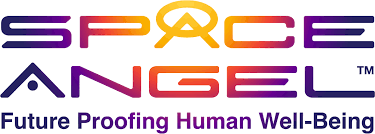World’s First Dual Corridor Sustainable Spaceports-
Pioneering Sustainable Space Access in the Indo-Pacific
Space Angel is redefining the future of space exploration with cutting-edge, sustainable space infrastructure. As the first company to develop a dual-corridor spaceport, strategically positioned for both polar and equatorial launches, we are unlocking new frontiers in global space access.
With state-of-the-art green spaceports in Eucla, WA, and Christmas Island, Space Angel provides a seamless platform for launch, re-entry, and landing, ensuring safe, efficient, and environmentally responsible space operations.
Our mission is to democratize access to space—empowering research, industry, and international collaboration while setting new benchmarks in safety, innovation, and sustainability. By transforming the Indo-Pacific into a global space hub, Space Angel is leading the charge in the next generation of space exploration.
We are currently in the process of raising our Pre-Seed Funding Round.
We are ready for suborbital launches in 2025 and any spacecraft re-entry in 2025 from the ASSC.
Investor information
Financial information
Investment sought: $151 - $250 million
Project website:
Project dependencies:
TBC
Technology utilised:
TBC
Project information
Project highlights:
With planned completion in 2033, Western Australia’s very own (and the world’s very first) low-cost, green spaceport with located near Eucla.
Eucla provides optimal weather and launch capabilities whilst being removed from human and wildlife areas, including protected marine areas. In addition, it has a port nearby and is an area with little aeroplane flyover.
Caiguna Launch Site Latitude: -32.488307° Longitude: 125.611789°
Proposed launch frequency: one launch daily Proposed types of launches: orbital and suborbital Madura Launch Site Latitude: -32.152368° Longitude: 127.636156°
Proposed launch frequency: one launch daily Proposed types of launches: orbital and suborbital
1. Population Density
The population density around the launch sites is notably low, with inhabited areas situated approximately 50-60 km northwest of the Madura launch site. The southward trajectory is entirely over the ocean, devoid of population. Although the north of the launch sites has lower population density, launching southwards is safer due to minimized risk. The unpopulated regions north of the Madura Launch site potentially allow for the establishment of a suborbital test range.
2. Marine Parks
The area south of the Madura and Caiguna launch sites does not intersect with conserved marine parks, a fortunate factor for launch site selection.
3. Shipping Lanes
Two main shipping routes, the Albany – Adelaide and Albany – Melbourne routes, traverse south of the launch sites. This region exhibits a relatively low density of shipping activity compared to other parts of Australia. Launches from the sites must coordinate with relevant marine authorities, and certain inclinations may avoid shipping routes altogether.
4. Land Titles
Land tenure for the ASSC sites comprises of vacant crown land across Caiguna, Cocklebiddy, Mundrabilla, Madura, and Eucla. Our initial launch site focus is the Madura launch site and Mundrabilla launch site. Our retrieval services will be focuses within Eucla.
5. Airline Flight Paths and IFR Waypoints
The airspace surrounding Caiguna and Madura experiences relatively low air traffic density compared to other regions in Australia, making it one of the least dense airspaces in the country. It primarily serves as an airway connecting the south of Western Australia to South Australia.
More Project details will be updated soon.
Request more information
Please fill in the form below. Mandatory fields are marked with
"*" indicates required fields



